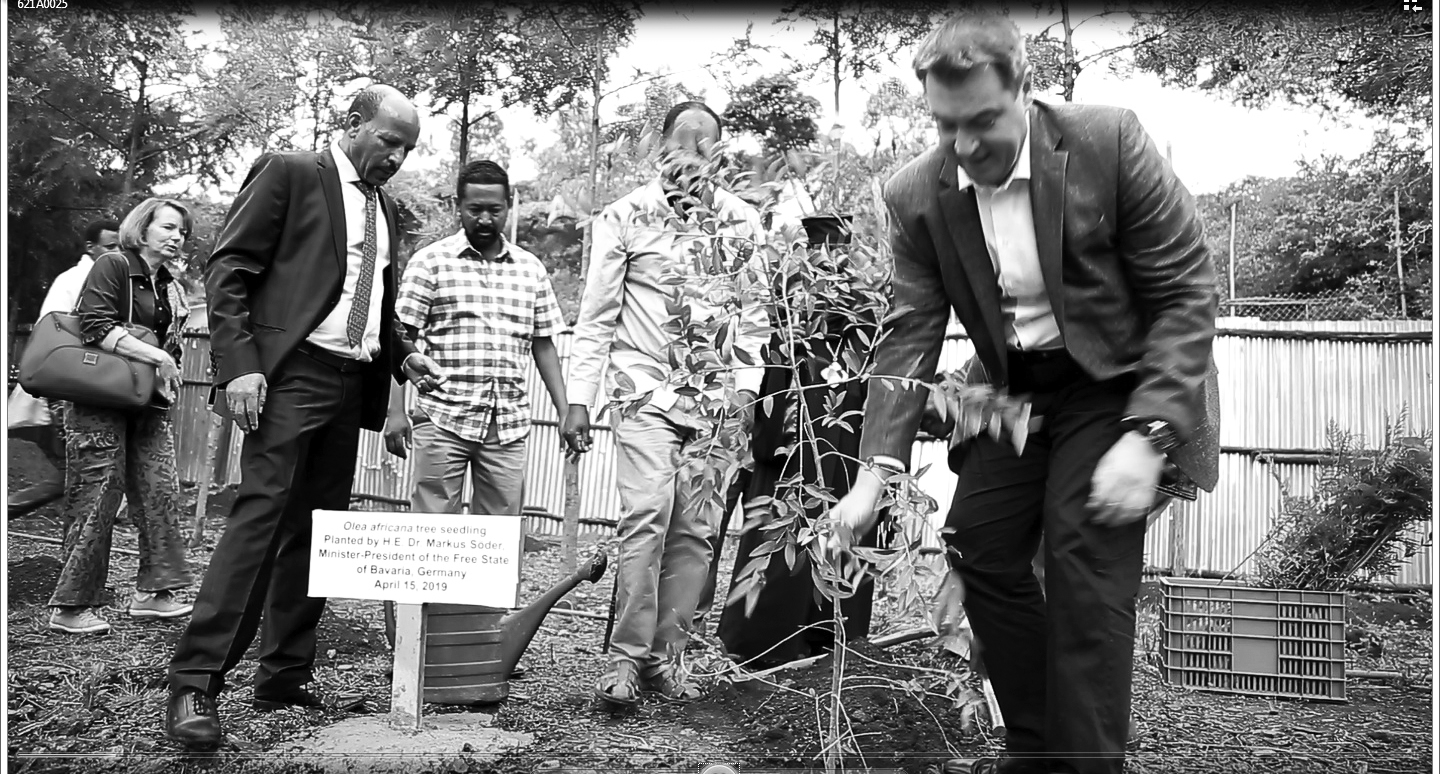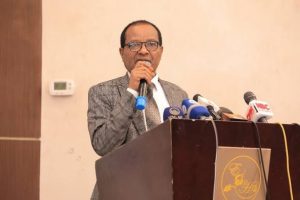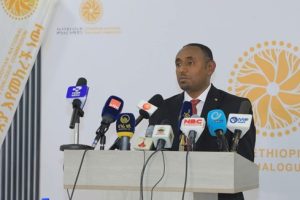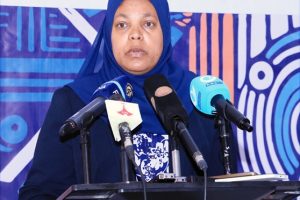
Environmental protection is such an issue of existence that all individuals and institutions have a responsibility. In this regard the Ethiopian Orthodox Tewahdo Church (EOTC) has received recognition for its long standing tradition of conserving wide variety of trees in the compounds of its parishes and monasteries.
The recent visit by Minister President of German Free state of Bavaria to the forestry works of the church also grabs attention of every one as to the uniqueness of the churches forest reserves.
EOTC is the oldest religious institution with the largest number of followers too. It has thousands of parishes in all corners of the country. Architecturally the churches have compounds that are filled with various types of trees. During ritual ceremonies or individual prayer the trees create a silent and tranquilizing atmosphere where worshippers enjoy a highly spiritual experience.
Just as the church conserved the trees with in its compound, it has also kept the practice with in itself. “There is some limitation on sharing the experience on their followers to implement around their village, all other religious institutions should follow the exemplary activities that are being undertaking by EOTC in forest conservation across the country says Negash Teklu, Executive Director of Population, Health, and Environment (PHE) Ethiopia.
Negash further asserted religious leaders have to give emphasis for forest conservation on their compound and surrounding in spite of the fact that there is hazard on the country’s nature and forestry protected areas. Despite the greenery and forest conservation activity by EOTC is appreciated, it needs further accomplishment. Additionally the government must encourage and support such activities, he noted.
Meanwhile the church is restricted only on its compound so that it is difficult to get similar air condition outside its compound. There upon, they must create awareness for their followers to do the same on their house and village to prevent air pollution across the country. As looking greenery area is every one’s wish, the awareness creation campaign is important not only for their followers but also for other religious institutions with their followers, Negash added.
Documents from Development and Inter-Church Aid Commission (EOC-DICAC) of the EOTC is highly partaking on forest conservation under its forestry and landscape restoration project in collaboration with Ethiopian Environment and Forest Research Institute which is financed by Protestant Agency for Dikonia and Development.
The project is designed to support the EOTC experience of forest conservation besides assisting the church’s effort on the conservation of endangered indigenous tree species like Juniperus procera, Podocarpus graciller, Olea Africana, Hygenia Abyssinica, etc. And these species are found in different churches and monasteries compound at Addis Ababa city administration, Oromia, Amhara, Tigray and South Nations, Nationalities and People regions.
“Recently EOC-DICAC has allocated 109 million Ethiopian birr in order to conserve forests in churches and monasteries which benefits more than 100 thousands of people” says Gebreselassie Atsbaha, Deputy Head of Development Department of the commission. He told The Ethiopian Herald on the occasion of church forest visit at Bole Bulbula, Addis Ababa by Minister-president of the Free State of Bavaria, Germany and its 35 delegation team this week.
As to him the goal of the project is to safeguard the protected forest areas among the churches and monasteries. It is also vital to save the forests and improve economic status of the surrounding societies in engaging on different activities. The commission will further strengthen its role by drafting different projects the deputy CAO added.
According to Tilaye Nigussie, Director of Forest Sector Transformation Unit of the Ethiopian Environment and Climate Change Commission, the government is working on environmental conservation through launching a ten-year forestland development program. As to him people must prevent climate change problem through planting and protecting forests as it is a natural resource that can assist the country’s economic development. He also appreciated the performance of EOTC in forest conservation and suggested all other religious institution to take this experience.
His Excellency Dr. Markus Soder, Minister-president of the Free State of Bavaria, Germany on the forest visit at Felege Hiwot Abune Teklehaymanot and St. Michael Monastery at Addis Ababa disclosed that, the government of Germany would do further in supporting such activities with finance and knowledge. According to Dr. Markus, forest is indispensable for environmental protection and food security. Hence, the ongoing activity by the religious institutions must be encouraged and strengthened.
The Minister- president and all delegations with the distinguished guests has planted seedlings inside the monastery’s compound.
On the other hand Gete Zeleke (PHD) Director General for Water and Land Resource Centre at AAU, emphasized that lack of government support, high population, negligence of religious fathers and climatic change are common hindrances for conserving forest across the country beyond religious institutions.
Even with its challenges, EOTC is working with its culture in protecting forests. Especially it is contributing a great deal in protecting indigenous plants he asserted. As to him it is also important to park all religious institutions so far. He also agreed that religious sectors should strengthen their role in environment conservation.
Conversely, Megabe Selam Kesis Solomon Tolcha, Heritage Conservation and Tourism Department Head at EOTC told The Ethiopian Herald that the church is participating in mainstream activities across the country besides its religious vision. Especially the church is highly raising its role in forest and environment conservation. He further would like to illustrate his idea with religious fathers saying goes “priest without breads and church without forest”.
Kesis further avowed that many of protected forests are found in various parishes which directly illustrate the participation of the church in forest conservation. For instance, the frost inside the compound of Waldiba and Asebot Monasteries and some other churches across the country are the result of the forest conservation practice at EOTC. He finally suggested that every religious institution can take this experience for the mutual benefit of Ethiopia so far. “All religious fathers, the government and the society should go hand in hand for better environment,” scholars agreed.
The Ethiopian Herald April 20, 2019
BY HIZKEL HAILU




